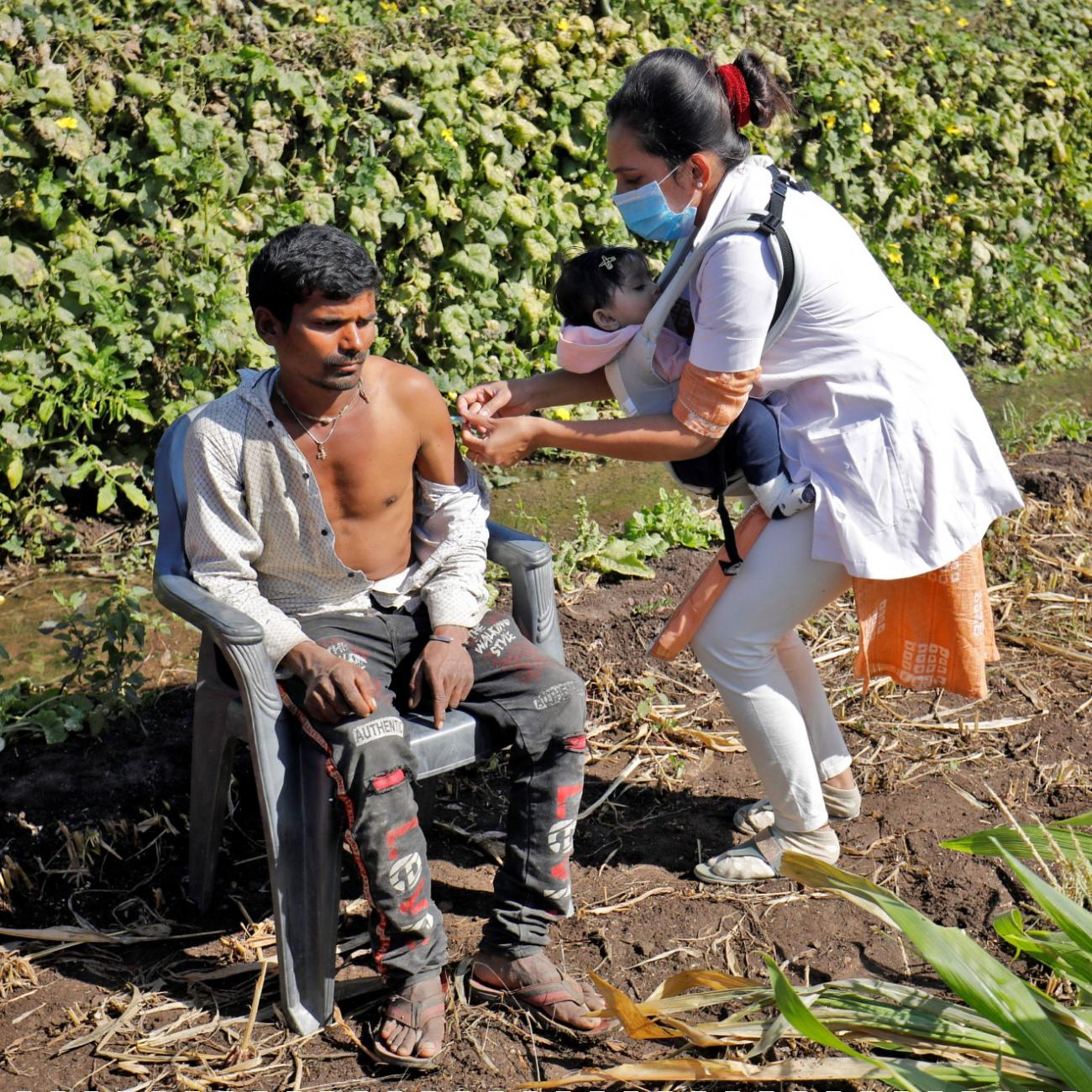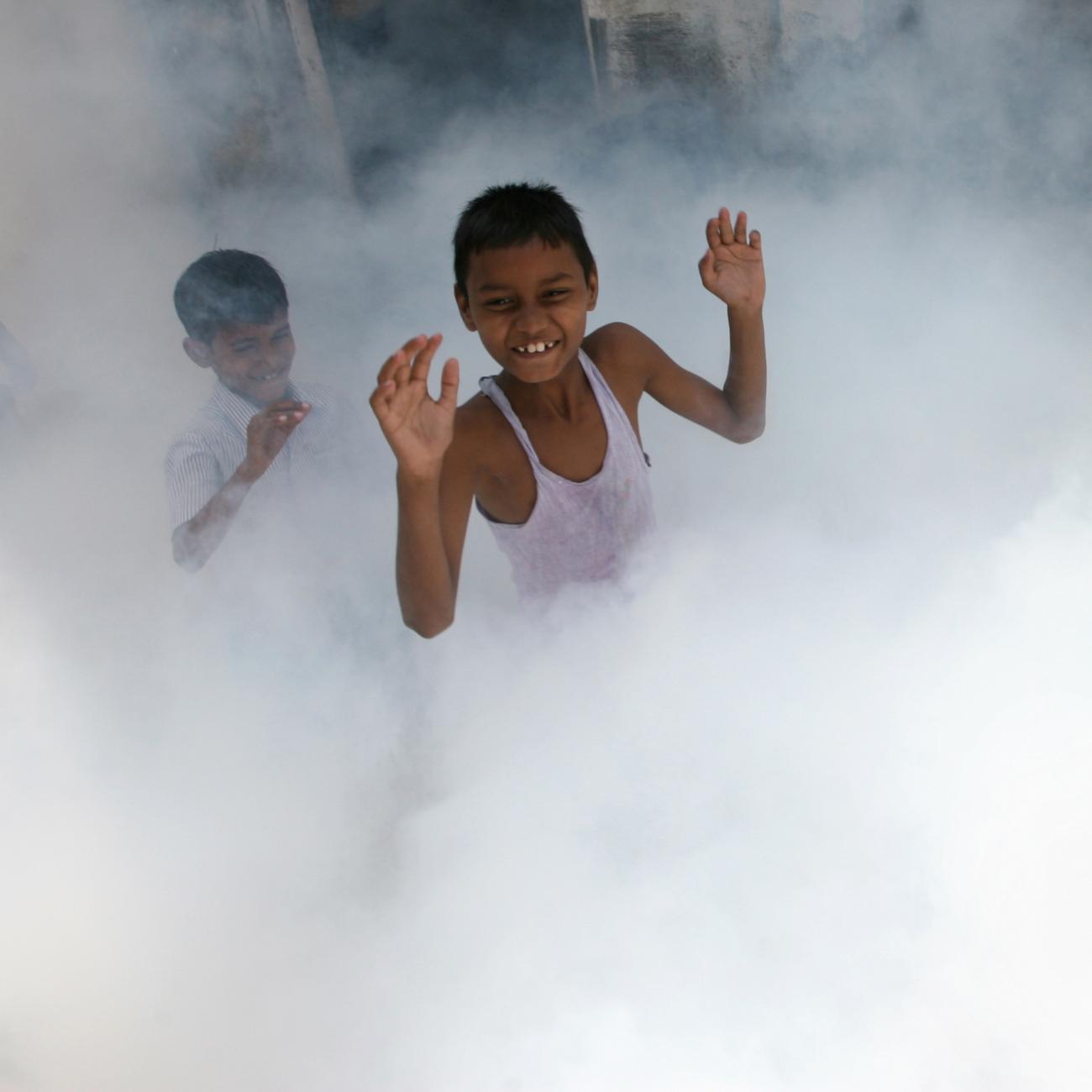From 1962 to 1982, in what is one of the greatest achievements of public health in the twentieth century, Chinese life expectancy nearly doubled, from thirty-five to sixty years. Much of the credit is due to community health workers, known there as “barefoot doctors,” who were sent to all corners of the countryside.
To a layperson, health care means doctors and nurses. The workers at the foundation of global health and who can have the greatest impact, however, do not necessarily hold those traditional clinical roles. They are instead community health workers and provide a line of communication, education, outreach, and support between health services and the community they serve.
Whether they are diagnosing tuberculosis in the city of Bethel in Alaska, preventing malaria in Kenya, or treating diabetes in the borough of the Bronx in New York City, community health workers are cost-saving, life-saving, and key to preventing and stopping pandemics.
Yet community health workers are also underutilized. In the decades since China’s tremendous gains in life expectancy, Beijing has tested various rural medicine initiatives but neglected community health and village clinics. Trust in primary care and community health workers has fallen. The country has struggled to recruit and retain such personnel, as have other low-, middle-, and high-income countries.
Countries worldwide need to reexamine the evidence and make community health workers a more central and sustainable part of their health systems.
Extremely Cost-Effective, but Underfunded
During the COVID-19 pandemic, nations poured enormous resources into mobilizing millions of community health workers for contact tracing and other activities. By 2023, though, those funds had dried up. Sub-Saharan Africa alone is short $2 billion for funding community health. In the United States, where pandemic funding is dwindling, some states are turning to Medicaid to pay community health workers, including for new programs to address maternal health.
According to a study conducted in sub-Saharan Africa, every dollar invested in hiring, training, and equipping community health workers returns $10 in terms of outbreaks mitigated or averted, jobs created, and lives saved. In the Bronx, each additional community health workers hired by a medical home saved $170,213 in costs per year, and hospitalizations among patients with chronic health issues such as diabetes fell 12.6 percent.
In Alaska’s Yukon-Kuskokwim Delta, village clinics are staffed by community health workers, who provide a range of acute, chronic, emergent, and preventative services. These practitioners are trained to monitor EKGs for rural residents. Thus, under the supervision of nurses and with physicians accessible via telemedicine, they can help determine whether patients with chest pain need to fly out to a hospital, saving resources for the health system.
A Building Block for Trust
Community health workers are responsible for finding infections that could become outbreaks and go door to door as part of primary care. Far from just providing emergency care, they offer everyday care.
Studies have shown that how states and countries performed during the COVID-19 pandemic was closely tied to their residents’ level of trust. Community health workers can create long-lasting trust between people and the public health system that serves them. Amid the misinformation and distrust that erupted during COVID-19, community health workers were something of an antidote. Further investments in community health could help combat fear and mistrust that are increasingly common in public health and primary health care.
Relying solely on health workers—who could themselves become infected to fall ill and become overwhelmed during outbreaks—is insufficient. Community health workers should be part of a multidisciplinary team, with access to diagnostics, treatment, and, when necessary, referral to more specialized care. Investing in community health workers increases access to healthcare and health information, which is critical when outbreaks do happen. Community health worker also provide a step toward empowering communities to care for themselves and to be more resilience during current and future epidemics.
A Job, Not a Side Hustle
Many in health have viewed community health as work for volunteers, or at best a part-time job, and are only beginning to understand the need to professionalize and pay adequate wages to the community health workforces. At the same time, health systems have often exploited community health workers who have minimal education and not been in a position to organize for their rights.
These workforces are disproportionately made up of women who are either not paid or paid less than survival wages. According to the not-for-profit advocacy organization Women in Global Health, six million women on the frontlines of health care, most of whom are CHWs, go unpaid each year.
The first place people seek treatment is in primary care, and community health workers will be critical to the team-based care and task sharing that are a part of such systems in just about every country. They’re closer to the patient, they're closer to the community, they collaborate and coordinate and communicate better. But unless community health workers are properly compensated, a professionalized system of them will not be sustainable.
Stagnant Progress
Forty-five years after the Alma Ata conference, a major milestone in public health in which countries called for better primary health-care systems, little progress has been made. Despite advances in specific areas, such as HIV, malaria, immunization, and to a degree in maternal and child health, most countries—including high-income nations such as the United States—have not built robust primary health-care systems that people who feel sick trust and seek out instead of a hospital.
Investments in community health workers could shift this balance. Disease prevention and treatment are tasks that should be shared by as many people as possible, including those with less training but the greatest lived-experience and expertise about their communities. Community health workers have been at the forefront of stopping infectious diseases and ensuring communities facing disparities and chronic disease also get necessary care.
In a world where almost half of the World Health Organization member states have less than one doctor per thousand people, community health work is not a substandard approach, but instead a modern way of delivering high quality health care. Serious investments to professionalize community health workers and make them a properly compensated part of primary care will bring a greater return on investments, bridging gaps in trust while delivering care tailored to each unique community.





